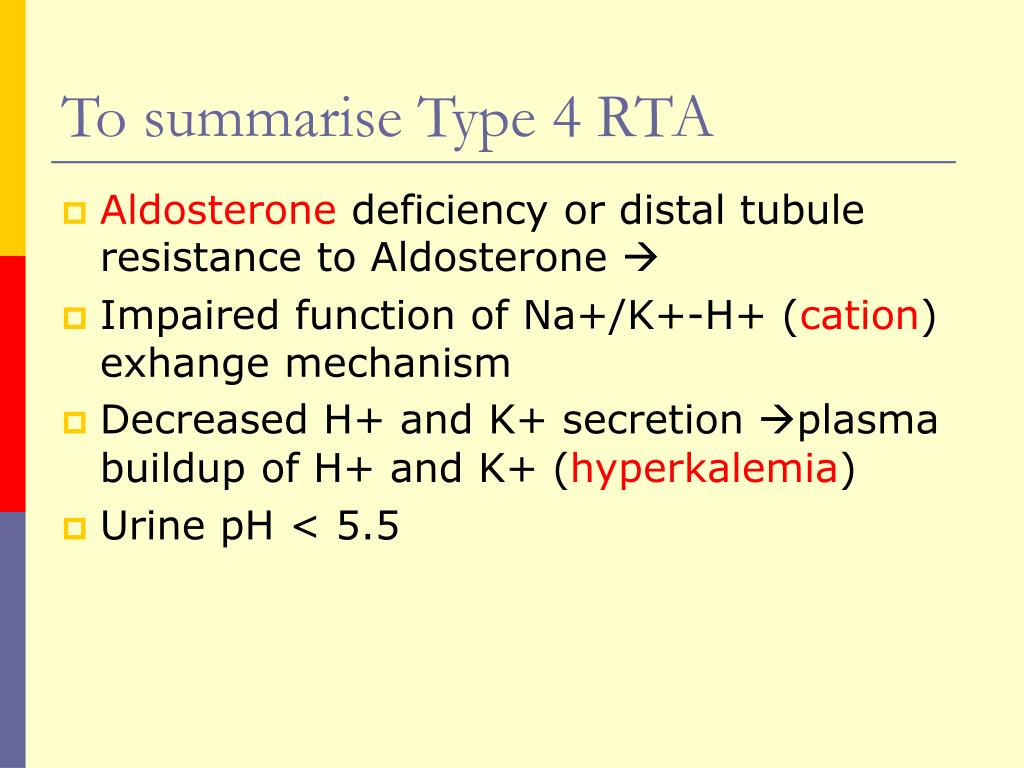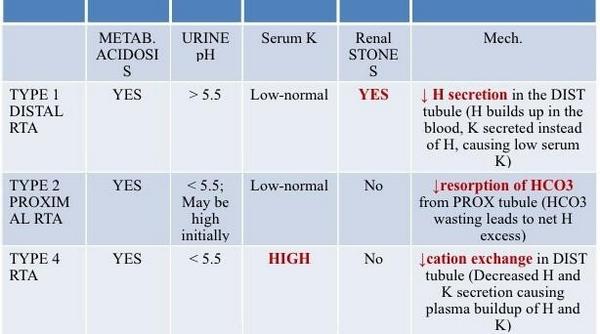

A Rare Case of Transient Proximal Renal Tubular Acidosis in Pregnancy Secretary RTA has appealed to public to cooperate with authority and avoid parking their vehicles on roads and parks because disorderly parking is increasing the traffic problems. The hypercalciuria is thought to be due to:ġ) increased calcium phosphate release from bone as a result of bone buffering of excess acid andĢ) reduction in tubular calcium reabsorption secondary to chronic acidosis. Distal RTA (type 1) is the most common form of primary RTA in most Western countries. Pathophysiology: Hypercalciuria, hyperphosphatemia, nephrolithiasis (calcium phosphate stones) and nephrocalcinosis are frequently associated with untreated type 1 RTA. What type of RTA is associated with an enhanced chance if nephrolithiasis?ĭistal or type 1 RTA can cause nephrocalcinosis / calcium oxalate kidney stones. These patients tend to have urinary K+ wasting and hypokalemia (thought to be due to increased potassium secretion by distal tubular cells in the setting of diminished H+ ion secretion.) The plasma bicarbonate is significantly reduced and may fall below 10 meq/L. Regulation of Cylinder Liner Lubrication. RTA-23: Technical Information to all the Owners of Sulzer RTA 38 and RTA 48 Type Diesel Engines. Loss of Material on Piston Crowns due to High Temperature Corrosion and Erosion. 2 The evaluation of the child with RTA includes obtaining history regarding. Technical Information to all the Owners of Sulzer RTA 58, 68, 76 and 84 Type Engines with WATERCOOLED PISTONS. Impairment in H+ ions secretion result in an inability to acidify the pH beyond 5.5 (Used in the diagnosis of type 1 RTA) There are 3 major types of RTA: type 1 (DRTA), type 2 (PRTA) and type 4. With an increased stimulus to distal sodium reabsorption, indicated by the finding of hyperaldosteronism, delivery to the distal nephron of supernormal amounts of sodium with the relatively impermeant bicarbonate anion would be expected to increase intraluminal negativity in the distal nephron, and as a consequence, increase potassium secretion and promote renal potassium wasting.Defective H+ ion secretion in the distal tubule.

These results provide evidence that renal potassium wasting in type 2 RTA is physiologically separable from that in type 1 RTA and in part the result of a reduction in the rate at which the proximal tubule reabsorbs bicarbonate and the distal delivery of supernormal amounts of sodium bicarbonate. When correction of acidosis was sustained, U HCO 3 -V/C in remained a trivial fraction of that filtered, and C K/C in was consistently less than 0.55.

When p was either increased from subnormal to normal levels, or decreased from normal to subnormal levels, U HCO 3 -V/C in remained essentially constant, and U KV/C in did not change significantly. In eight patients with classic RTA (type 1 RTA), proximal renal tubular reabsorption of bicarbonate was largely intact as judged from a trivial reduction of THCO 3 - at normal p. In the six patients in whom p was maintained at normal levels (oral alkali therapy) for 2 months or longer, C K/C in was directly related to the urinary excretion rates of sodium and bicarbonate, hence was directly related to the magnitude of reduction of THCO 3 - at normal p C K/C in was greater than 0.55 in all six patients and greater than 1.0 in four. When p was decreased to subnormal levels in a patient given ammonium chloride, U KV/C in, C K/C in, and U HCO 3 -V/C in decreased concurrently. When p was increased to normal levels in two patients with a C K/C in of greater than 1.0 during acidosis and in whom U NaV/C in and U HCO 3 -V/C in were already markedly increased, C K/C in did not increase further.

When the plasma bicarbonate concentration (p) was experimentally increased to normal levels in three patients with a fractional potassium excretion (C K/C in) of less than 1.0 during acidosis, C K/C in and urinary potassium excretion (U KV/C in) increased strikingly and concurrently with a striking increase in urinary sodium (U NaV/C in) and bicarbonate (U HCO 3 -V/C in) excretion. The mechanism of renal potassium wasting in renal tubular acidosis associated with the Fanconi syndrome (type 2 RTA) was investigated in 10 patients, each of whom had impaired proximal renal tubular reabsorption of bicarbonate as judged from a greater than 15-20% reduction of renal tubular bicarbonate reabsorption (THCO 3 -) at normal plasma bicarbonate concentrations.


 0 kommentar(er)
0 kommentar(er)
